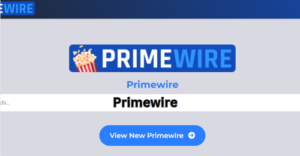2024-05-02 09:10:16-05:00-What You Need to Know

In today’s digital world, staying on top of search engine results is more crucial than ever. With ever-evolving algorithms from Google and other search engines, it is essential to stay ahead of the curve. One way to ensure success is through strategic and effective SEO practices. The keyword “2024-05-02 09:10:16-05:00” might seem complex, but it can be harnessed to drive targeted traffic and achieve optimal search visibility when used correctly. In this guide, we’ll explore how you can outrank your competitors using this unique keyword while also touching on the broader strategies that will keep you at the top of search results in 2024.
1. Understanding SEO in 2024
Search Engine Optimization (SEO) is the process of improving your website to increase its visibility when people search for products or services related to your business on Google, Bing, and other search engines. In 2024, SEO strategies will be influenced heavily by artificial intelligence, user experience, and technical advancements. To stay competitive, businesses must stay up to date with the latest trends and tools, including machine learning algorithms, advanced analytics, and personalized search.
Key Elements of SEO in 2024
- User Experience (UX): Search engines are focusing more on user satisfaction metrics like page experience and usability.
- Artificial Intelligence (AI): Google’s AI, such as BERT and MUM, is transforming how search queries are processed.
- Voice Search: With the rise of smart assistants, voice search is a growing trend.
- Structured Data: Schema markup helps search engines better understand the context of your content.
By mastering these components and aligning them with targeted keywords like
“2024-05-02 09:10:16-05:00,” you can ensure your website ranks high on search engine results pages (SERPs) in 2024.
2. Keyword Research and Its Role in Your SEO Strategy
Keyword research is the backbone of any SEO strategy. It involves identifying the search terms your target audience uses to find content related to your niche. By understanding the intent behind searches and targeting keywords with high traffic potential, you can tailor your content to meet user needs.
How to Choose the Right Keywords
- Volume and Competition: While high-volume keywords can drive traffic, they’re often competitive. Instead, focus on long-tail keywords like “2024-05-02 09:10:16-05:00,” which have lower competition but are more specific to user intent.
- Search Intent: Google emphasizes understanding search intent—whether users are looking for information, navigation, or transactions. Aligning content with intent is critical for ranking in 2024.
- Keyword Density: Maintaining the right keyword density is essential. With “2024-05-02 09:10:16-05:00,” a 2% density means it should appear around 2 times for every 100 words, naturally fitting into your content without feeling forced.
3. The Significance of Long-Tail Keywords Like “2024-05-02 09:10:16-05:00”
Long-tail keywords are extended phrases that users enter into search engines. While these terms often have lower search volumes, they represent highly specific searches with clear intent.
Benefits of Targeting Long-Tail Keywords:
- Lower Competition: Long-tail keywords face less competition compared to broader terms, making it easier to rank higher.
- Higher Conversion Rates: Users who search for long-tail terms often know what they are looking for, resulting in better engagement and higher conversion rates.
- Relevance to Search Queries: “2024-05-02 09:10:16-05:00” could be relevant to a specific niche audience. Ensuring your content answers the needs surrounding this search term can lead to high relevance and better SEO results.
How to Use Long-Tail Keywords Effectively
Incorporate your keyword naturally into headings, subheadings, meta tags, image alt texts, and the body content. Ensure that your keyword placement supports a seamless user experience.
4. On-Page Optimization: How to Incorporate the Keyword “2024-05-02 09:10:16-05:00”
On-page SEO refers to the optimization of individual web pages to rank higher and earn more relevant traffic. Proper on-page SEO will ensure your content is aligned with the keyword “2024-05-02 09:10:16-05:00” and meets search engine standards.
Steps for Optimizing Your Page:
- Title Tag Optimization: Include the keyword “2024-05-02 09:10:16-05:00” in the title of your page for immediate relevance to search engines.
- Meta Descriptions: Write engaging meta descriptions that include the keyword to entice users to click on your result.
- Header Tags: Use H1 for the main title and include your keyword naturally. Subheadings (H2, H3, etc.) should also include variations of the keyword for better readability and SEO value.
- Internal Linking: Link to other relevant pages on your site. This helps search engines crawl your site better and boosts engagement.
- Image Optimization: Use alt text for all images, incorporating the keyword where possible.
5. Content Strategy
The importance of high-quality content cannot be overstated in 2024. Search engines are more sophisticated, and the days of keyword stuffing are long gone. Google rewards well-researched, comprehensive, and valuable content that genuinely serves the reader’s intent.
Key Factors to Consider:
- User-Centric Content: Write content that addresses the audience’s pain points, desires, and questions. If someone searches for “2024-05-02 09:10:16-05:00,” what information are they looking for?
- Long-Form Content: Long-form articles tend to rank better. Aim for over 3000 words while ensuring your content remains engaging and informative.
- Readability: Break content into small paragraphs, use bullet points, and include visuals like images, infographics, or videos. This makes it easier to digest and improves user engagement.
- E-A-T (Expertise, Authority, Trustworthiness): Demonstrating expertise and building authority within your industry is crucial for both search engines and users.
6. Technical SEO: Optimizing the Backend of Your Site
Technical SEO ensures that your site is well-structured and optimized for crawling and indexing by search engines. Without a strong technical foundation, even the best content can struggle to rank.
Core Aspects of Technical SEO:
- XML Sitemap: Ensure your site has an updated sitemap that makes it easier for search engines to index your content.
- Robots.txt File: This tells search engines which pages they can and cannot index.
- Secure Sockets Layer (SSL): Make sure your site is secure with HTTPS, as security is a ranking factor.
- Mobile Optimization: As Google operates on a mobile-first indexing system, your site must be fully optimized for mobile devices.
- Core Web Vitals: Focus on improving key metrics like Largest Contentful Paint (LCP), First Input Delay (FID), and Cumulative Layout Shift (CLS).
7. Mobile-First Indexing and Page Speed Optimization
With mobile-first indexing, Google primarily uses the mobile version of your site for ranking and indexing. In 2024, if your website isn’t mobile-friendly, your rankings will suffer.
Best Practices:
- Responsive Design: Ensure your site adjusts to different screen sizes seamlessly.
- Fast Loading Times: Use tools like Google’s PageSpeed Insights to check and optimize your site’s speed. Compress images, minify CSS and JavaScript, and leverage browser caching.
- Optimize for Voice Search: With mobile voice search on the rise, optimize your content for conversational queries.
8. Building High-Quality Backlinks
Backlinks from reputable sites signal to search engines that your content is trustworthy. In 2024, building high-quality backlinks remains a key ranking factor.
Strategies to Build Backlinks:
- Guest Blogging: Writing for other authoritative sites can help build your backlink profile.
- Influencer Collaborations: Collaborate with influencers in your niche who can link back to your site.
- Broken Link Building: Reach out to webmasters to replace broken links with links to your content.
- Content Partnerships: Form partnerships for content co-creation, which can lead to mutual backlinks.
9. Tracking Your SEO Performance in 2024
To succeed in SEO, continuous monitoring is vital. Use analytics tools to measure the success of your strategy, including the performance of the keyword “2024-05-02 09:10:16-05:00.”
Key Metrics to Track:
- Organic Traffic: Monitor how much traffic is coming from search engines.
- Bounce Rate: High bounce rates can signal irrelevant content or poor user experience.
- Conversion Rates: Track how well your content is converting visitors into customers or subscribers.
- Keyword Rankings: Regularly check where your target keywords rank on SERPs.
Conclusion:
As SEO evolves in 2024, staying adaptable and focused on quality is key. By incorporating long-tail keywords like “2024-05-02 09:10:16-05:00” into a comprehensive SEO strategy, you can outperform your competition and rank high in search results. Remember to focus on creating user-centric content, optimizing your site’s technical aspects, and building a robust backlink profile. Stay consistent with tracking and improving your SEO efforts, and success will follow.
FAQS:
1. What is the keyword “2024-05-02 09:10:16-05:00” used for?
The keyword “2024-05-02 09:10:16-05:00” appears to be a timestamp, likely representing a specific moment in time. This could be relevant in contexts such as event scheduling, logging data, or historical records. It might be used by individuals or systems searching for information or records tied to that exact date and time.
2. How can I rank for a keyword like “2024-05-02 09:10:16-05:00”?
To effectively rank for a keyword like “2024-05-02 09:10:16-05:00,” integrate it naturally throughout your content. Use it in strategic places such as the title tag, meta description, headers, and within the body of the text. Ensure the content around this keyword is relevant and provides value to users who might be searching for information related to that timestamp.
3. What is the ideal keyword density for SEO in 2024?
In 2024, the ideal keyword density is typically around 1-2%. This means that for every 100 words, the keyword should appear 1-2 times. For the keyword “2024-05-02 09:10:16-05:00,” ensure it is included naturally within the content to avoid keyword stuffing and maintain readability.
4. What role does content quality play in SEO?
Content quality is crucial in SEO as search engines prioritize content that is useful, relevant, and engaging to users. High-quality content improves user experience, increases time spent on the page, and encourages interaction, all of which are positive signals for search engines and can boost your rankings.
5. How do long-tail keywords affect SEO?
Long-tail keywords, such as “2024-05-02 09:10:16-05:00,” are typically more specific and have lower search volume compared to broad keywords. However, they are highly valuable because they attract users with specific intents, leading to higher conversion rates. They often face less competition, making it easier to rank for these terms.
6. What are core web vitals, and why are they important?
- Largest Contentful Paint (LCP): Measures loading performance.
- First Input Delay (FID): Measures interactivity.
- Cumulative Layout Shift (CLS): Measures visual stability. These metrics are important because they directly impact user experience and are used by Google to determine ranking.
7. How can I improve my site’s mobile-friendliness?
To enhance mobile-friendliness, ensure your site uses a responsive design that adjusts to various screen sizes. Optimize images and media for fast loading, simplify navigation, and ensure that touch elements are easily clickable. Tools like Google’s Mobile-Friendly Test can help assess and improve mobile usability.
8. What is the difference between on-page and off-page SEO?
- On-Page SEO: Refers to optimization strategies applied directly on your website, including content creation, keyword usage, meta tags, and internal linking.
- Off-Page SEO: Involves actions taken outside your website to improve its ranking, such as building backlinks, social media engagement, and influencer collaborations.
9. How often should I update my content for SEO?
Regularly updating content is beneficial for SEO. Aim to review and refresh your content every 6-12 months to ensure it remains relevant and up-to-date. This can help maintain or improve your rankings and provide users with the most current information.
10. What tools can help with SEO tracking and performance analysis?
- Google Analytics: For tracking website traffic and user behavior.
- Google Search Console: For monitoring search performance and indexing issues.
- SEMrush: For keyword tracking, competitive analysis, and SEO audits.
- Ahrefs: For backlink analysis and keyword research.
- Moz: For tracking rankings and on-page optimization insights.





